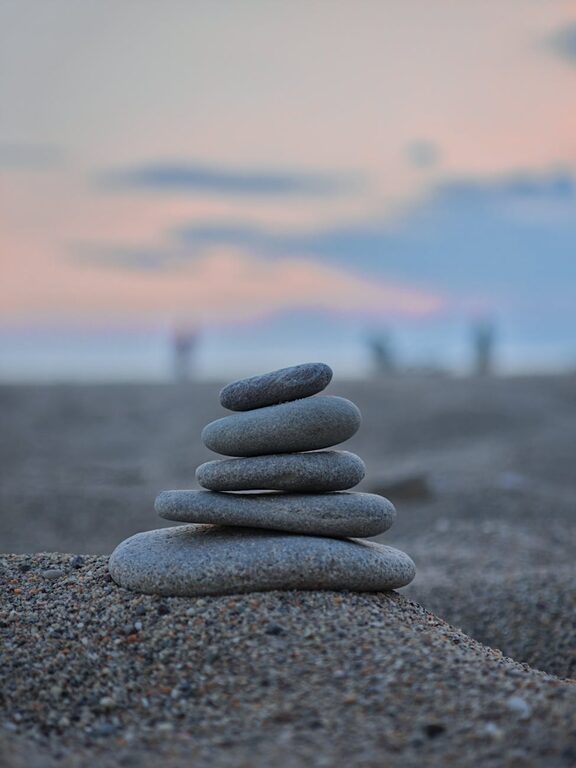In today’s fast-paced world, finding moments of calm can feel challenging. Mindfulness—the practice of being fully present in the moment—offers a simple yet powerful way to reduce stress and improve overall well-being. The good news is that mindfulness doesn’t require special equipment, expensive courses, or hours of free time. You can weave simple mindfulness practices into your daily life, no matter how busy you are. In this post, we’ll explore practical techniques that anyone can try.
What Is Mindfulness?
Mindfulness means paying attention to the present moment with openness and curiosity, without judgment. It helps you become more aware of your thoughts, feelings, and physical sensations as they happen. Rather than worrying about the past or the future, mindfulness invites you to experience what’s happening right now. This awareness can help reduce stress, enhance focus, and improve emotional resilience.
Benefits of Daily Mindfulness
Incorporating mindfulness into your day has many positive effects, including:
– Reduced anxiety and stress
– Improved concentration and focus
– Better emotional regulation
– Enhanced creativity and problem-solving
– Greater appreciation for everyday moments
– Improved sleep quality
With these benefits in mind, let’s explore some simple practices to try.
Simple Mindfulness Practices for Daily Life
1. Mindful Breathing
One of the easiest ways to practice mindfulness is through mindful breathing. You can do this anytime, anywhere.
How to do it:
– Find a comfortable position, sitting or standing.
– Close your eyes if you like.
– Take a slow, deep breath in through your nose, feeling your lungs expand.
– Exhale slowly through your mouth.
– Focus your attention entirely on your breath—the sensation of air entering and leaving your body.
– If your mind wanders, gently bring it back to your breath.
Start with just one minute and gradually increase the time as it feels comfortable.
2. Mindful Observation
Choose an object in your surroundings—like a flower, a cup, or even a cloud—and observe it carefully.
How to do it:
– Look closely at the object.
– Notice its colors, shapes, textures, and any small details you might usually overlook.
– Pay attention to how it makes you feel or any memories it might bring up.
– Stay focused on this observation for a few minutes.
This practice helps you slow down and appreciate the present moment.
3. Mindful Walking
Walking is already a motion many of us do multiple times a day without much thought. Mindful walking transforms this everyday activity into a calming practice.
How to do it:
– Walk slowly and deliberately.
– Focus on the sensation of your feet touching the ground.
– Notice the movement of your legs and body.
– Observe the sounds, smells, and sights around you.
– If your mind gets distracted, gently bring your focus back to your steps and surroundings.
Even a five-minute mindful walk can refresh your mind.
4. Mindful Eating
Eating can be a chance to practice mindfulness and enjoy your food more fully.
How to do it:
– Eat without distractions like TV or phones.
– Take small bites and chew slowly.
– Notice the flavors, textures, and aromas.
– Pay attention to your body’s signals of hunger and fullness.
– Reflect on where your food came from and the effort involved in bringing it to your plate.
This practice cultivates gratitude and a deeper connection with your meals.
5. Body Scan
A body scan is a way to check in with your body and release tension.
How to do it:
– Sit or lie down in a comfortable position.
– Close your eyes and take a few deep breaths.
– Slowly bring your attention to different parts of your body, starting at your toes and moving upward.
– Notice any sensations, tension, or discomfort without trying to change them.
– Breathe into areas of tension and imagine releasing it on your exhale.
This practice promotes relaxation and body awareness.
Tips for Building a Mindfulness Habit
– Start small: Even one or two minutes daily is a great beginning.
– Set a reminder: Use your phone or sticky notes to prompt your mindfulness practice.
– Be consistent: Try to practice at the same time each day to build routine.
– Stay patient: Mindfulness is a skill that grows with time; don’t worry about doing it perfectly.
– Combine with daily tasks: Try mindful breathing while waiting in line or mindful observation during your coffee break.
Mindfulness and Technology
While mindfulness encourages unplugging from distractions, technology can also support your practice. Apps like Headspace, Calm, or Insight Timer offer guided meditations and reminders that can help you stay on track.
Final Thoughts
Mindfulness is a simple yet meaningful way to bring calm, clarity, and joy into your daily life. The key is to approach these practices with kindness toward yourself, allowing your mind to wander without judgment and gently exploring the present moment. By regularly setting aside a few minutes for mindfulness, you can cultivate greater peace and resilience, no matter what your day holds.
Try incorporating one or more of these simple practices into your routine, and notice how they impact your stress levels and overall well-being. Remember, every moment you take to be mindful is a gift to yourself.

